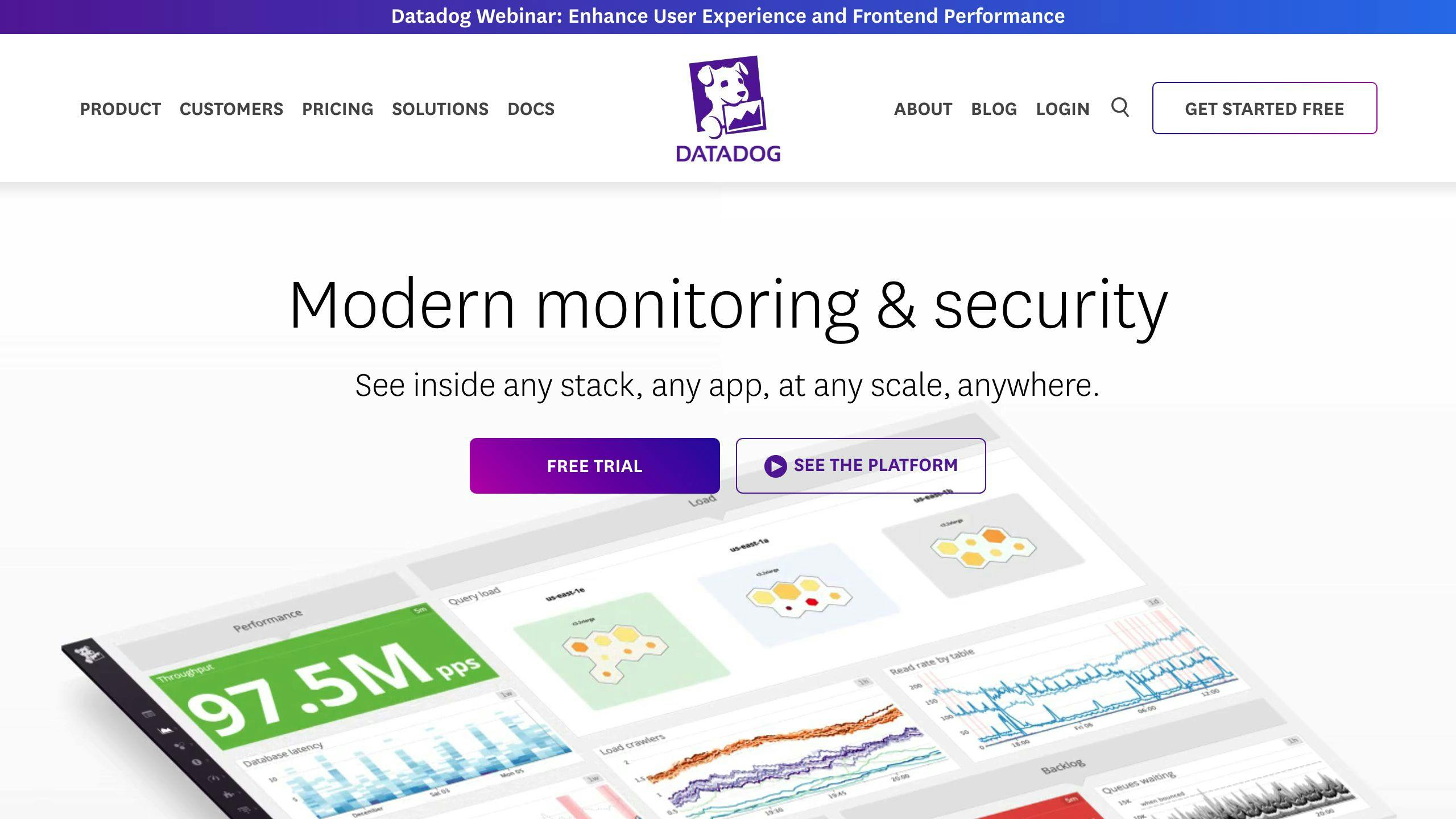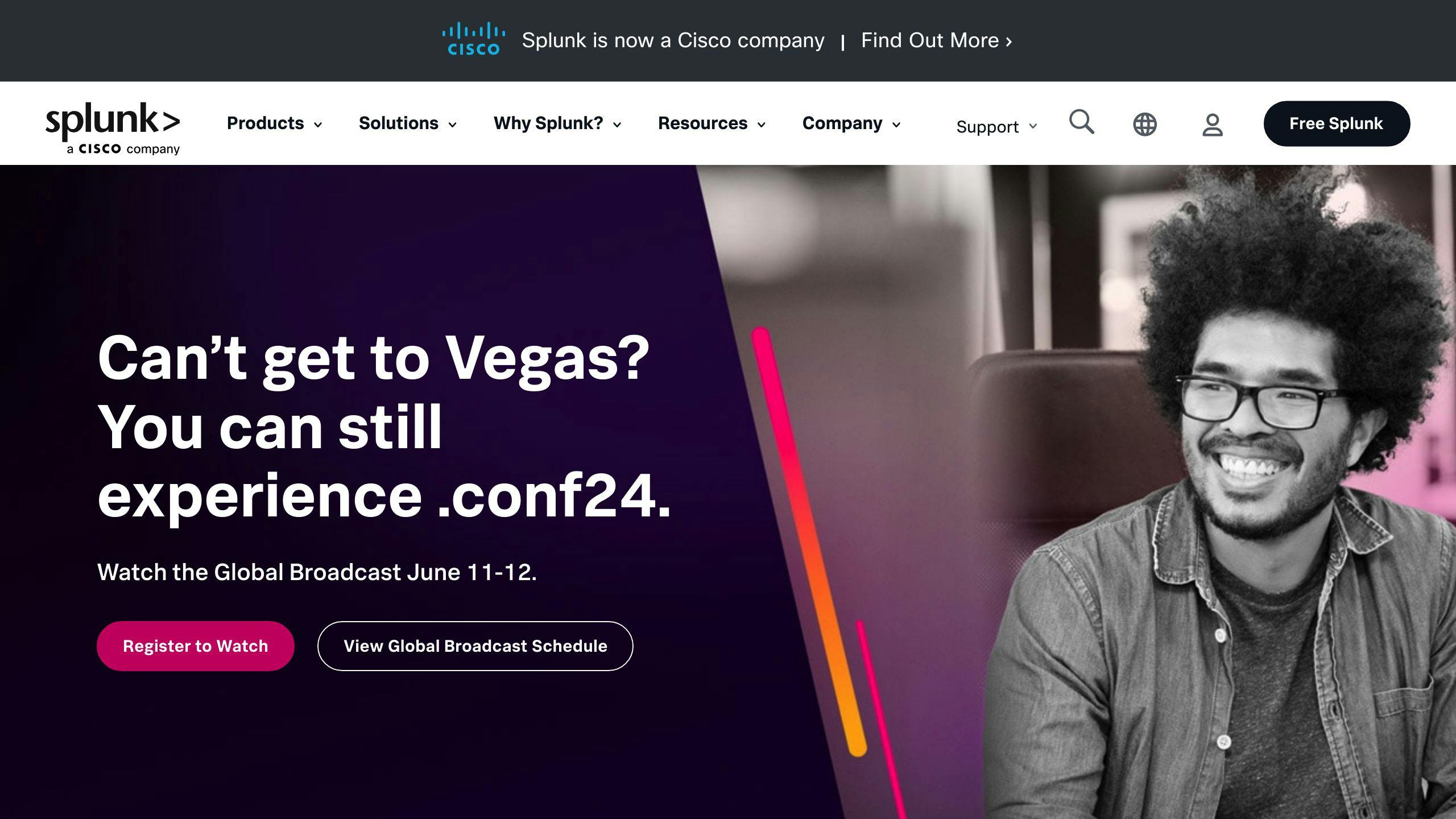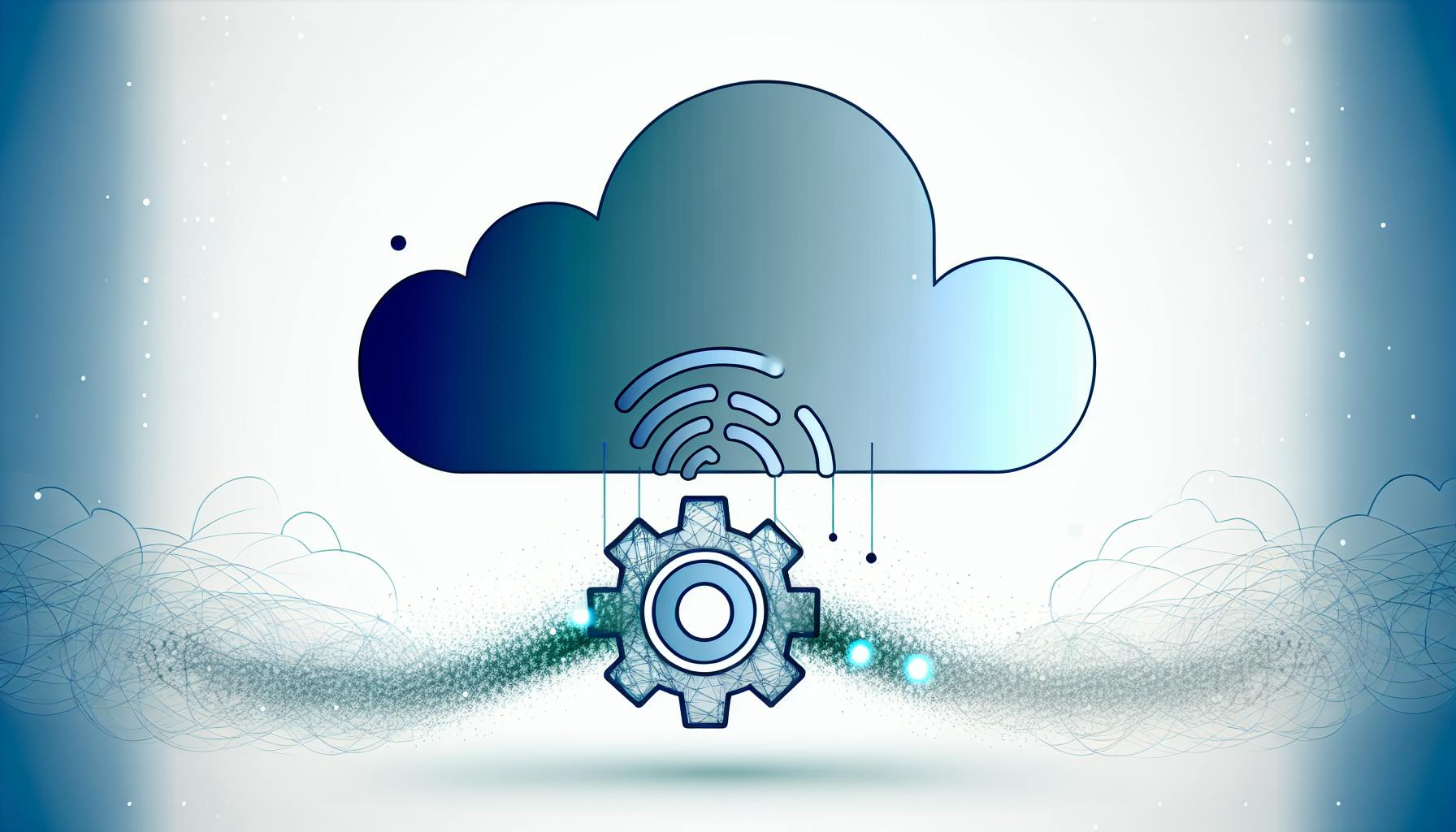Datadog's a big player in observability, but other tools are stepping up. Here's what you need to know:
- Observability market grew from $61B in 2019 to $105B in 2023
- Key competitors: Dynatrace, New Relic, AppDynamics, Splunk
- Newer tools often offer better pricing, easier setup, advanced features
| Tool | Key Strength | Pricing Model | Best For |
|---|---|---|---|
| Datadog | Unified platform | Complex SKU-based | All-in-one monitoring |
| Dynatrace | AI-driven insights | Per-host | Deep visibility |
| New Relic | Auto-instrumentation | User-based | Flexible, scalable monitoring |
| Splunk | Powerful search | Various options | Log management and security |
When choosing:
- Consider specific needs and budget
- Look for AI/ML integration and cloud-native support
- Check OpenTelemetry compatibility
- Evaluate long-term costs and scalability
- Prioritize ease of use and strong support
Only about 10% of organizations achieve full observability today. The right tool can give you an edge.
Related video from YouTube
3. What Datadog Offers

Datadog's a major observability player. Let's break down its offerings.
3.1 Datadog's Strong Points
Datadog shines in:
- Unified Platform: Combines infrastructure monitoring, APM, and log management
- Wide Integration: Over 450 built-in integrations
- Real-Time Monitoring: Up-to-the-minute insights across infrastructure
Users praise Datadog's all-in-one approach:
"Datadog served as our end-to-end monitoring solution, covering applications, databases, servers, and more." - Anuj Rai, Team Lead - Information Technology, DISYS
The APM feature is popular:
"We use Datadog to trace and monitor our whole infrastructure. The APM feature is a blessing." - Verified user, Engineer
3.2 Where Datadog Falls Short
Datadog has weak spots:
- Complex Pricing: Users struggle with SKU-based pricing
- Unexpected Costs: Surprise charges for additional hosts or metrics
- Setup Challenges: Agent-based system can be tricky for larger networks
One user shared:
"I asked them if I could pre-commit to a certain number of hosts, and the answer was 'Any additional host you bring on will be an additional charge.' This doesn't work for me as I need a fixed infra budget."
Another faced unexpected charges:
"We could not fully evaluate DataDog because they charged us for 50 hosts inadvertently sending metrics for 2 days out of the month. This was our mistake - we accidentally deployed the DataDog agent to an entire tier, not realizing this would incur charges."
Datadog's pricing tiers:
| Tier | Price |
|---|---|
| Network Performance | $5 per function per month |
| Infrastructure | $15 per host per month |
| APM | $31 per host per month |
| Serverless | $5 per host per month |
| Log Management | $1.27 per million log events per month |
Datadog offers a lot, but pricing and setup can be hurdles. Weigh these factors against your needs.
4. Other Observability Tools
Let's look at Datadog's main competitors and what sets them apart.
4.1 Feature Comparison
| Tool | Key Features | Pricing (Annual) |
|---|---|---|
| Datadog | Unified monitoring, 450+ integrations, real-time insights | APM: $31/host/month |
| New Relic | Auto-instrumentation, infrastructure health monitoring | $0.30/GB after free 100GB |
| Dynatrace | AI-driven monitoring, deep visibility | Varies by solution |
| Splunk | Full-stack observability, powerful search | APM: $55/host/month |
| SigNoz | Open-source, logs, metrics, and traces in one view | Free tier available |
4.2 What Makes Competitors Different
New Relic: Auto-instrumentation for 8 programming languages. G2 rating: 4.3/5.
Dynatrace: AI for automation and analytics. G2 rating: 4.5/5.
Splunk: Strong log management and security monitoring. G2 rating: 4.3/5.
SigNoz: Open-source alternative with integrated features. Free 30-day unlimited access.
Each tool's strengths:
- New Relic: Application performance and infrastructure health
- Dynatrace: AI-driven monitoring
- Splunk: Log management and security monitoring
- SigNoz: Open-source solution with integrated features
Consider your needs, budget, and tech stack when choosing. Many offer free trials or tiers.
5. How Other Tools Go Beyond Datadog
Other tools are pushing the envelope:
5.1 Better Infrastructure Monitoring
| Tool | Cloud Monitoring | On-Premise | Container Support | Scalability |
|---|---|---|---|---|
| Dynatrace | Advanced AI-driven | Full support | Auto-discovery | Enterprise-grade |
| New Relic | Real-time metrics | Limited | Native Kubernetes | High volume data |
| SigNoz | Cloud-native focus | Self-hosted option | OpenTelemetry native | Open-source scalability |
Dynatrace's OneAgent tech automatically discovers and collects data from your IT setup.
5.2 Improved Application Performance Management
New Relic and AppDynamics are upping the ante:
- New Relic: Auto-instrumentation for 8 programming languages.
- AppDynamics: Enterprise edition starts at $90/month per CPU Core. Deep code-level insights.
5.3 Advanced Log Management
Splunk and SigNoz are making waves:
- Splunk: Powerful search capabilities.
- SigNoz: Open-source tool with logs, metrics, and traces in one view. OpenTelemetry support.
5.4 AI and Machine Learning in IT Ops
- Dynatrace: Davis AI engine predicts issues before they happen.
- Moogsoft: ML-enabled anomaly detection to cut through IT noise.
6. Improved User Experience Monitoring
Several tools now offer features beyond Datadog's capabilities:
6.1 Better Real User Monitoring
| Tool | Key Features | Pricing |
|---|---|---|
| Raygun | Session replay, performance breakdowns | Starts at $80/month |
| Dynatrace | AI-based analysis, session replay | Starts at $11/month |
| New Relic | Unlimited containers, 30-day log retention | 100 GB free data/month |
Raygun captures performance metrics for every user session. Dynatrace uses AI-driven insights. New Relic offers cost-effective usage-based pricing.
For mobile apps, UXCam offers:
- Funnels and user journey maps
- Detailed event logs
- Heatmaps for user interactions
Embrace provides:
- 100% of sessions captured without sampling
- Advanced ANR monitoring
- Detailed crash reporting and error monitoring
Choose based on your needs: mobile-focused tools like UXCam or Embrace, or comprehensive solutions like Dynatrace or New Relic.
7. Enhanced Security and Compliance
Modern observability platforms offer robust security monitoring and compliance features.
7.1 Meeting Compliance and Spotting Threats
| Tool | Security Features | Compliance Capabilities |
|---|---|---|
| Datadog | SIEM, anomaly detection | Compliance reporting |
| Elastic Security | Advanced threat detection | Regulatory alignment |
| SolarWinds SEM | 300+ compliance templates | PCI DSS, GLBA, SOX, NERC CIP, HIPAA |
Datadog's SIEM capabilities suit industries with strict security needs. Elastic Security aligns with industry-specific standards. SolarWinds SEM offers extensive compliance reporting templates.
For automated compliance, consider Apptega, Vanta, or Drata.
To maximize these features:
- Define compliance requirements clearly
- Choose tools aligning with your needs
- Implement comprehensive monitoring
- Automate compliance checks and alerts
- Regularly review observability practices
sbb-itb-9890dba
8. Working with Other Tools
Modern platforms offer better integration capabilities than traditional options like Datadog.
8.1 Better APIs and Developer Tools
| Tool | Integration Capabilities | Key Features |
|---|---|---|
| SigNoz | Native OpenTelemetry support | Open-source APM, combines tracing and metrics |
| Azure Monitor | Multi-cloud and hybrid cloud monitoring | Seamless integration with Microsoft and non-Microsoft tools |
| Chronosphere | Open-source integration | Optimized for containerized and microservices architectures |
| Treblle | CI/CD pipelines, version control systems | 250,000 free API requests, paid plans from $99/month |
OpenTelemetry is a game-changer, supporting various languages and frameworks.
When selecting a tool, consider:
- Data collection capabilities
- Scalability and performance
- Ease of integration
- Visualization features
- Alerting mechanisms
- Community support and documentation
9. Pricing and Long-Term Costs
Understanding long-term financial impact is crucial when scaling observability solutions.
9.1 Total Cost Comparison
| Tool | Pricing Model | Key Considerations |
|---|---|---|
| Datadog | Complex SKU-based | $0.05 per custom metric, unpredictable bills |
| New Relic | User-based | $0.30/GB after 100GB free, up to $549/user |
| Dynatrace | Per-host | $69/month for 8GB per host (annual billing) |
| AppDynamics | Per CPU core | Starts at $60/month per CPU core |
| Checkly | Usage-based | $2 per 10,000 API runs, $5 per 1,000 Browser runs |
Datadog's pricing complexity can lead to budget overruns. Custom metrics can account for up to 52% of total billing.
Checkly offers a more transparent structure. Customers report saving over 70% by switching from Datadog.
To manage costs:
- Regularly audit metrics and logs
- Track billing-related usage
- Consider consolidating tools
- Opt for usage-based pricing
10. Setting Up and Using New Tools
Ease of setup and use is key when moving beyond Datadog.
10.1 Help and Expert Support
| Tool | Setup Time | Ease of Use | Support Options |
|---|---|---|---|
| SigNoz | Minutes | User-friendly interface | Community support, documentation |
| Instana | < 20 minutes | Automated setup | Enterprise-level support |
| SolarWinds | Minutes post-installation | Quick configuration | 24/7 technical support |
| Better Stack | Quick setup | Intuitive UI | 60-day money-back guarantee |
SigNoz offers a 30-day free trial. Alerty provides quick setup for NextJS, React, and Node.js.
When choosing, consider:
- Documentation quality
- Training resources
- Integration with existing tech stack
- Community support
Look for tools with:
- Clear documentation
- Responsive customer support
- Regular updates
- Active user communities
11. Preparing for Future Changes
The observability market has grown from $61B in 2019 to $105B in 2023, bringing new trends:
| Trend | Description |
|---|---|
| Observability Pipelines | Real-time filtering and routing of telemetry data |
| AI/ML Integration | Using Large Language Models to simplify user experiences |
| OpenTelemetry | Push for open standards to avoid vendor lock-in |
| Bring-Your-Own Storage | Flexibility to use preferred storage solutions |
| CI Pipeline Visibility | Insights into the software development lifecycle |
To prepare:
- Embrace AI and ML
- Focus on cloud-native monitoring
- Consider distributed systems
- Look for flexible data handling
- Check for OpenTelemetry support
Only about 10% of organizations achieve full observability today, showing room for improvement.
12. Conclusion
Choosing the right observability tool is crucial for scaling operations. Consider these factors:
- Infrastructure Monitoring
- Application Performance Management
- Log Management
- AI and Machine Learning
- User Experience Monitoring
- Security and Compliance
- Integration and APIs
- Pricing and Scalability
- Ease of Use and Support
- Future-Readiness
Select tools that address emerging trends and fit your specific needs to stay competitive in the rapidly evolving observability landscape.
FAQs
Who does Datadog compete with?
Main competitors: Dynatrace, New Relic, AppDynamics, ManageEngine Applications Manager, Azure Monitor, IBM Instana Observability, Amazon CloudWatch, Elastic Observability
What is the difference between Splunk and Datadog?

| Aspect | Datadog | Splunk |
|---|---|---|
| Main focus | General monitoring and observability | Large-scale data search and analysis |
| Key strengths | Ease of use, APM features | Powerful log management, search capabilities |
| Best suited for | Overall infrastructure and application monitoring | In-depth log analysis and data search |
Who is Datadog's biggest competitor?
Dynatrace is often considered Datadog's biggest competitor. Other strong alternatives include New Relic, LogicMonitor, IBM Instana, and checkmk.
When choosing an alternative, consider your specific monitoring and observability needs, as each tool has its own strengths and focus areas.



